Posted by Powee Celdran
“Basil: Basileus does an excellent job not only in bringing to life the highly climactic Byzantine Empire of the 10th century but it makes us as readers today see the empire more clearly as it is told from the perspective of Sigurd, a foreigner just like us people today getting know the Byzantine world. There is not a single dull moment in the entire novel yet it is just the start of a long and exciting story that is to come, that of the legendary Byzantine emperor Basil II.” -Powee Celdran, the Byzantine Time Traveller
WARNING: THIS ARTICLE CONTAINS SOME SPOILERS!!
If you do not want any spoilers, please order Basil: Basileus on the site of Byzantine Tales.
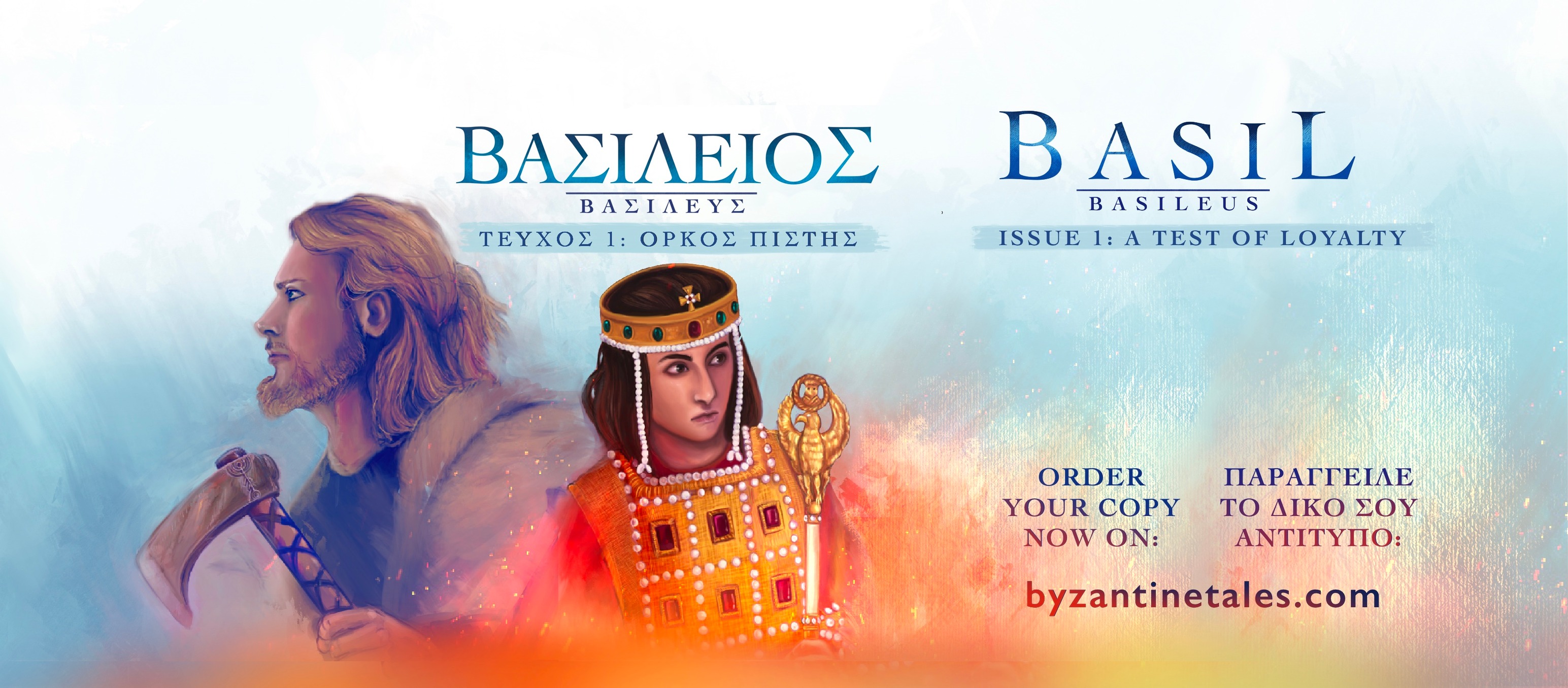
Welcome back to another article by the Byzantium Blogger! It’s been quite a while since I last posted something on this site, but now I’m back and this time with a new special edition article which will be a review on the new Byzantine graphic novel Basil: Basileus by no other than Byzantine Tales, the creators of the Byzantine graphic novel Theophano: A Byzantine Tale which I also read and made a review on last year (read it here). Now this novel I will be reviewing here is the direct sequel to their previous hit graphic novel “Theophano: Byzantine Tale”, and of course since this article will be reviewing the book it will contain SPOILERS, so it’s best you check out their site (click here) and order a copy of it before you read this. Now this sequel novel happens to be the first chapter of a series on the title’s character which is no other than the famous Byzantine emperor Basil II (r. 976-1025) and just like the Theophano novel, it is again written by Spyros Theocharis (follow on Instagram @spyrosem) and illustrated by Chrysa Sakel (follow on Instagram @chrysasakel). As the title suggests and with it being the first part of a series, this one discusses the early life of the legendary Byzantine emperor and what shaped him to be a strong emperor that struck fear into his enemies from a weak palace prince. The title too in itself definitely also shows that it is a sequel to Theophano as the title’s character Basil is sure enough the son of Theophano who was the protagonist of the previous novel, while the title on the other hand being “Basil: Basileus” means “Basil the emperor” as Basileus was the title that the Byzantine emperors were addressed as. Now as I reviewed their previous hit novel last year, it is about time I now review its sequel which is just equally as great as the previous one if not better as it is much more concise, more action packed, and does a great job in highlighting the lead characters and their personalities very well. Additionally, this novel has a very unique element now that it shows Byzantium and its society from the perspective of a foreigner, in this case being the Varangian (Viking) Sigurd, a rather fictional character introduced to the story who was originally a Varangian warrior fighting for the Kievan Rus’, captured by the Byzantines, brought into the Byzantine army, and during his stay in the Byzantine Empire in the 970s during the reign of Emperor John I Tzimiskes (r. 969-976) witnesses basically everything that goes on from heated battles to political intrigues. Although the young emperor Basil II is the title character, when reading it, it would actually seem more like Sigurd is the lead character as he is the one driving the story rather than being the one the story revolves around, whereas Basil is the one who the story revolves around as it talks about his rise to power whereas Sigurd is the one who takes part in most of the action, thus by having two lead characters, both Sigurd and Basil appear in the cover. As for this article, I will be discussing some perfect reasons on why to read this novel, some opinions I have on it, and my recommendations. This article too includes a Q&A with the creators wherein I asked them about some elements in creating the novel as well as a few strategies in marketing Byzantine history, similar to what I asked them in a previous article (read it here). Although unlike the article I made reviewing the previous novel Theophano which has my fan casting for the novel, this one will not have one as this article is basically just reviewing the first chapter in this series as the creators said this is just the first part of a series of at least 4 novels, thus I will do a fan casting for it when the entire series of Basil II is completed.


Check out their website byzantinetales.com/basilbasileus to get more info on the graphic novel.
Check out their social media sites:
Facebook: Byzantine Tales
Instagram: @Byzantine_Tales
Twitter: @byzantinetales
Youtube: Byzantine Tales
Note: pictures of the graphic novel from the Byzantine Tales FB page. Works of other artists namely Oznerol-1516, Hasahshin619, Amelianvs, and Ediacar too appear in this article.
Byzantine Tale’s first novel “Theophano” was no doubt an excellent graphic novel with a Byzantine setting that more than a year ago after I finished reading it, I couldn’t wait for its sequel. Certainly, it was not too long enough that a sequel to it was announced, and thus the moment it was announced that Theophano would have a sequel, I already intended to order it once the English version was released- as the Greek version was released first.

With the English version being released, I decided to go for getting a special signed copy by ordering it directly from the creators, and soon enough I got my signed copy of the book with a special illustration of its lead character Basil II by the artist herself together with giveaway stickers and a postcard depicting the Macedonian Dynasty siblings of the book Basil II, Constantine VIII, and Anna Porphyrogenita together with Sigurd the Varangian warrior. As mentioned earlier that this particular book is the first chapter of a series, it was very much a quick and easy read as it is only just about 50 pages that in only 3 days I finished it unlike the previous one being Theophano which was a much longer one that did in fact take me weeks to finish reading it. Of course, both novels Theophano and now Basil are unique and interesting in their own ways but what makes both equally fascinating are its rich illustrations that truly bring the Byzantine Empire to life from the heat of the battlefield to the opulence of the imperial palace. In terms of story, this novel is very much straight to the point with lots of action and excitement and not much dialogue as true enough the reign of the senior emperor John I Tzimiskes in which most of the novel is set in was a very highly action-packed time in Byzantine history with so much epic battles and conquests, and for this reason the Byzantine army does play a big role in the book. To put it short, the novel spans quite a short period of time beginning with the Battle of Dorostolon in 971 where the Byzantines defeat the Kievan Rus and ending in 976 when Emperor John I died and Basil II at 18 finally accedes as the senior emperor, so basically just 5 years, unlike the previous novel Theophano which took place over 15 years, if not more. Now for this article, a lot of the information I will put was based on a Q&A I did with the book’s creators, but on the other hand the novel itself too was partly based on primary sources from the Byzantine era.
Please check out my social media sites too:
Instagram: @Byzantine_Time_Traveller
Facebook: Byzantine Time Traveller
Youtube: No Budget Films
Deviantart: Byzantium-blogger55
Art Station: Powee Celdran Porphyrogennetos
Patreon: Byzantine Time Traveller

Related articles from my site The Byzantium Blogger:
A Review and Fan Casting for Theophano: A Byzantine Tale
A Review and Reaction for Byzantine novel The Usurper
Marketing Byzantine History Part1
Marketing Byzantine History Part2
Byzantine Alternate History Chapter VII- A Retelling of the Bizarre Byzantine Renaissance
Reasons to buy and read Basil: Basileus

It is concise, highly action-packed, and exciting at every moment as not only is it set at a highly climactic and action-packed era in Byzantine history being the 970s but it was written in such a way that something exciting happens in every scene. Already where the novel begins 971, there is a large epic battle which was the Battle of Dorostolon in Bulgaria where the Byzantine forces led by the emperor John I Tzimiskes himself defeated the forces of the Kievan Rus’ led by their prince Sviatoslav I, and it is here where the lead character Sigurd- not Basil- is introduced as someone fighting for the Rus against the Byzantines but is at the end captured and later made part of the Byzantine army once he arrives in Constantinople. When the story shifts to the imperial capital Constantinople, the same kind of exciting atmosphere continues when we are introduced to the junior co-emperors Basil II and his younger brother Constantine VIII together with their luxurious lives, as well as the complex court politics and corruption the Byzantine Empire was known for, and how impressive the Byzantine capital Constantinople was. Following that, the novel proceeds to John I’s campaigns in the Middle East against the Arab powers now that the Byzantines have turned the tide of war against the Arabs after more than 300 years of fighting on the defensive against them. As the novel too shows John I’s Middle East campaigns, we get to see more of the empire such as the interesting landscape of the Byzantine heartland Asia Minor and the deserts of Syria. The story ends where John I suddenly falls ill possibly due to being poisoned and dies whereas Basil who is actually the legitimate emperor finally becomes the senior emperor. Now at the back cover of the book, professor Dr. Georgios Theotokis when reviewing the novel does in fact say that the era of this novel is set in being the 970s was a turning point for the expansionist strategy of the Byzantine Empire as it included first the Byzantines having turned the tide of war against the Arabs in the east, following that their partial conquest of Bulgaria in the north together with the expulsion of the Kievan Rus, and after that a period of civil war that would follow the death of Emperor John I Tzimiskes in 976.

Its illustrations truly bring the greatness of Byzantium to life. Truly, its artist Chrysa Sakel again does an excellent job in illustrating the Byzantine era from the impressive landmarks such as Constantinople’s Hagia Sophia and Hippodrome to the rich silks worn by the emperor and the powerful members of the court to the ornate objects found in Byzantine society.

Other than showing the colorful clothes the rich and powerful Byzantines wore, the armor worn by soldiers and generals in great detail, the impressiveness of Byzantine landmarks in the imperial capital, and a lot of strong expressions on the characters’ faces, the novel also does a great job in showing different parts of the Byzantine Empire at that time at great length and detail. Unlike the previous novel Theophano where most of the story basically just showed Constantinople in great detail wherein other parts of the empire were mostly skimmed through very quickly, this novel on the other hand does justice to other parts of the Byzantine Empire of that time and not just Constantinople by giving a lot of attention to other locations. For instance, the opening sequence of the novel shows in detail the marshy terrain of Bulgaria and thus highlights the dark and brooding mood as an epic battle is taking place. In this novel, Constantinople and its impressiveness including landmarks you may not have heard of too is highlighted a lot, though the novel does indeed give Constantinople equally the same amount of attention as compared to other locations in the empire. Other than showing the marshy terrain of Bulgaria, this novel too shows as I mentioned earlier the interesting landscape of Byzantine Asia Minor including the city of Ankara, the rocky terrain of Cappadocia, and the lavish villas of powerful Byzantine politicians and generals across the empire, and not only does the novel quickly show these locations, it does a great job in showing them at length. Towards the end, the novel goes even further in showing the deserts of Syria and ending at Palestine very close to Jerusalem as true enough John I campaigned deep into Syria against the Arabs wherein the Arabs even easily surrendered the city of Damascus back to the Byzantines. John I however never achieved his goal which was to take back Jerusalem as this was when in 975, he fell ill and returned to Constantinople wherein he died in early 976. Other than showing locations, the novel too does a great job in showing the Byzantine Empire in that era by showing people of different races and nations such as the Varangians which is Sigurd, the Kievan Rus including their prince Sviatoslav, Armenians, and Arabs, not just the Byzantines. However, since its setting is primarily the Byzantine Empire despite its leading character Sigurd being a Norseman, the majority of the characters are Byzantines.
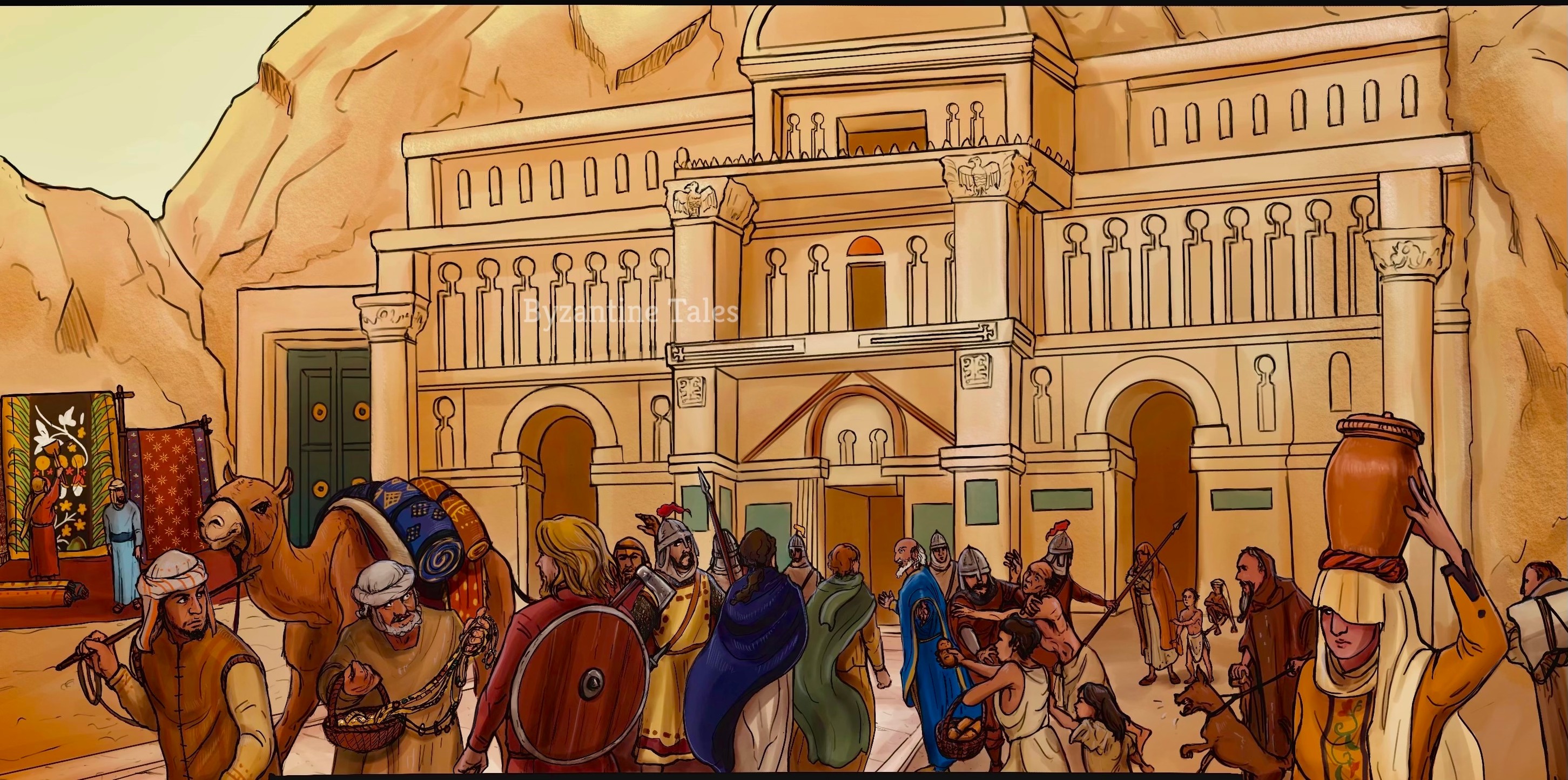
It features a great amount of continuity from the previous novel as true enough a lot of the characters, settings, and designs from the previous novel Theophano: A Byzantine Tale continue on in this particular novel. For instance, a lot of characters that played a major role in the previous novel mainly the emperor John Tzimiskes and the powerful yet scheming eunuch minister Basil Lekapenos reprise their roles in this novel and still have a major role. Basil II, Constantine VIII, and their younger sister Anna Porphyrogenita too appeared in the previous novel, although their roles back then were very minor, compared to this novel.

Other than them, another character who reprised his role here was Grand Prince Sviatoslav of the Kievan Rus, who in the previous novel only appeared very briefly and basically just in one image, though in this one the fearsome Kievan Rus’ prince has quite a generous amount of “screen time” wherein he is seen first battling the powerful Byzantine army in Bulgaria and then surrendering to the Byzantines after his defeat at the Battle of Dorostolon. Other characters too that make a comeback here are John I’s top general and loyalist Bardas Skleros, who however appeared very briefly in the previous novel at the ending sequence as well as another general named Anemas, who appeared also very briefly and only at the ending sequence of the previous novel. In this story however, this Anemas character only appears at the beginning where he is killed in battle by Sigurd who here was still with the Rus, while Skleros on the other hand has a much larger role as John I’s most trusted general and commander of the elite cavalry force known as the Athanatoi or “Immortals”, and at the end of the novel following John’s death Bardas Skleros rises up in rebellion against the young Basil II and the eunuch Basil Lekapenos to avenge his friend and brother-in-law John. Other than them, another character that reprises his role here is the general Michael Bourtzes who in the previous novel had quite a generous amount of “screen time”, and the same can be said about his appearance in this novel too, now that here he had become the commander or Doux of Antioch. Now this novel does not exactly begin where the previous one ended wherein the emperor Nikephoros II Phokas (r. 963-969) was assassinated in his sleep in 969, instead it already moves on to 971 opening with John I’s conquest of Bulgaria and battle against the Kievan Rus, thus skipping the events between 969 and 971, except for a flashback in the year 970 which introduces Sigurd fighting for the Rus together with their Magyar allies at the Battle of Arcadiopolis very close to Constantinople where the Byzantines defeated the undefeatable Kievan Rus prince Sviatoslav for the first time.
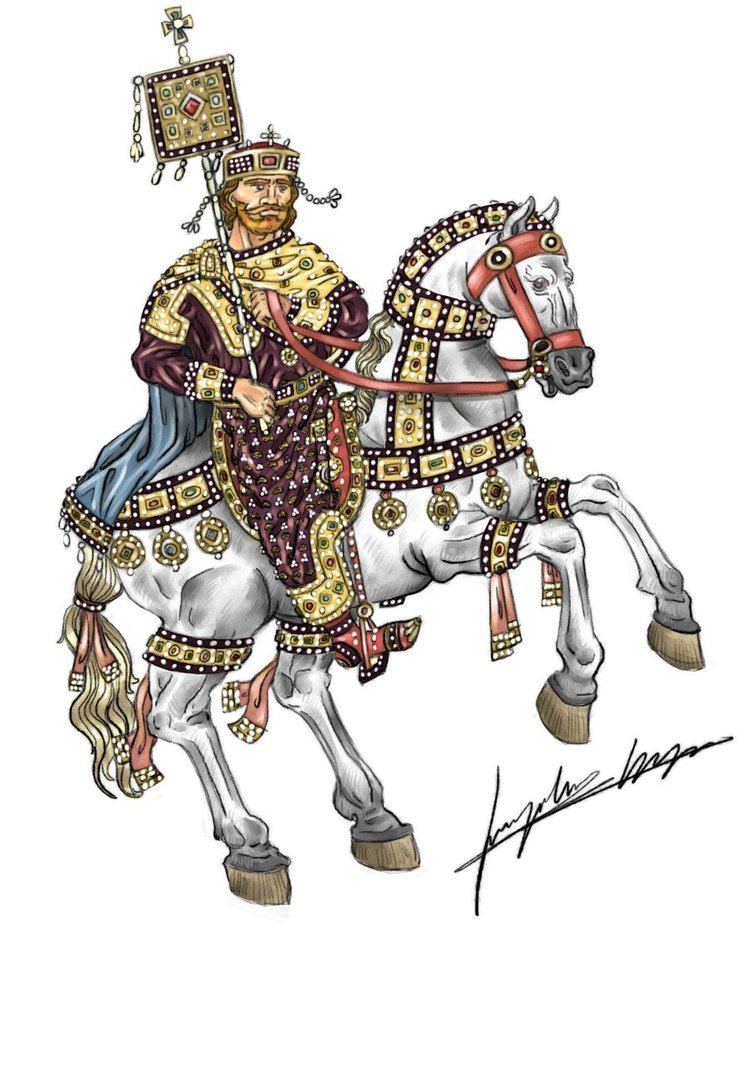
Now as a way to bridge the ending of the previous novel to the beginning of this one, the novel opens with a quick summary of events recapping the end of the previous novel wherein John Tzimiskes had to murder his uncle Nikephoros II to take the throne all while the Kievan Rus that had invaded Byzantium’s northern neighbor Bulgaria had now broken into Byzantine territory. Of course, characters from the previous novel that had already died like Nikephoros II, Emperor Constantine VII Porphyrogennetos, Emperor Romanos II, the eunuch Joseph Bringas, and Empress Helena Lekapene no longer make an appearance, not even in flashbacks. Other characters too that survived at the end of the previous novel such as the general Leo Phokas the Younger and the Patriarch Polyeuctus do not return in this novel as Polyectus had already died in 970 and Leo in 971, thus both died before this novel opened. As for the empress Theophano, she was in fact still alive in this novel’s setting, however she does not make an appearance as throughout the entire time of this novel she had been in exile, however she is only mentioned in this novel and at the final part it is hinted that she was to be brought back from exile as true enough the previous novel ended years later when Theophano had returned from exile while her son Basil II had already become the senior emperor, therefore making this novel set in the years that were skipped at the ending sequence of the previous novel. The big mystery on the other hand happens to be whatever happened to Theophano’s father Krateros as in the previous novel wherein he was a major character, he survived at the end, though in this novel he makes no appearance at all, and neither is his name mentioned, and this could possibly hint that he had already died. However, when asking the creators, they did in fact say the character of Krateros was still alive at the setting of this book but he was omitted because there were already way too many character’s in the story. Now despite there being a lot of continuity from the previous novel, this one however from my observation had altered quite a lot of the appearances of the characters from the previous novel that reprised their roles, such as for instance the character of Basil II who in the previous novel had light hair now suddenly having dark hair in this story while John Tzimiskes’ appearance in this novel doesn’t really resemble his appearance from the previous novel much, however the eunuch Basil Lekapenos still very much looks the same in this novel as compared to the previous one. The reason now to why characters like John Tzimiskes’ and Basil II’s appearances were altered was mostly because the artist Chrysa changed her technique when illustrating this novel.
All characters have an interesting story and all play a key role in moving the story from the men in power like the senior emperor John I Tzimiskes, his junior co-emperors Basil II and Constantine VIII, the eunuch Basil Lekapenos, to the generals like Bardas Skleros, Michael Bourtzes, and Nikephoros Ouranos, to the Varnagian newcomer Sigurd. Each of the characters have their own unique traits and all have a role in moving the story. First of all, the Varangian Sigurd who in my opinion drives the story as it opens with him at the Battle of Dorostolon where he is captured and brought to Constantinople wherein he eventually meets the young junior emperors Basil and Constantine and later on joins the campaigns of John Tzimiskes in the Middle East, and at the end rushes back to Constantinople to fulfill his duty in protecting the emperor Basil II against the general Bardas Skleros who had just risen up in rebellion. The senior emperor John I Tzimiskes too plays a very crucial role as the most powerful man of the empire as despite the brothers Basil and Constantine being the rightful emperors, John was really the one running the show as the brothers were still underaged whereas John was a strong and capable military man with many years of experience in the battlefield that he as emperor personally led his troops in battle, and at the same time he was also very much well-loved by the people for being a generous leader though he was also opposed by the faction loyal to the previous emperor Nikephoros II Phokas who was in fact John’s uncle that John assassinated.
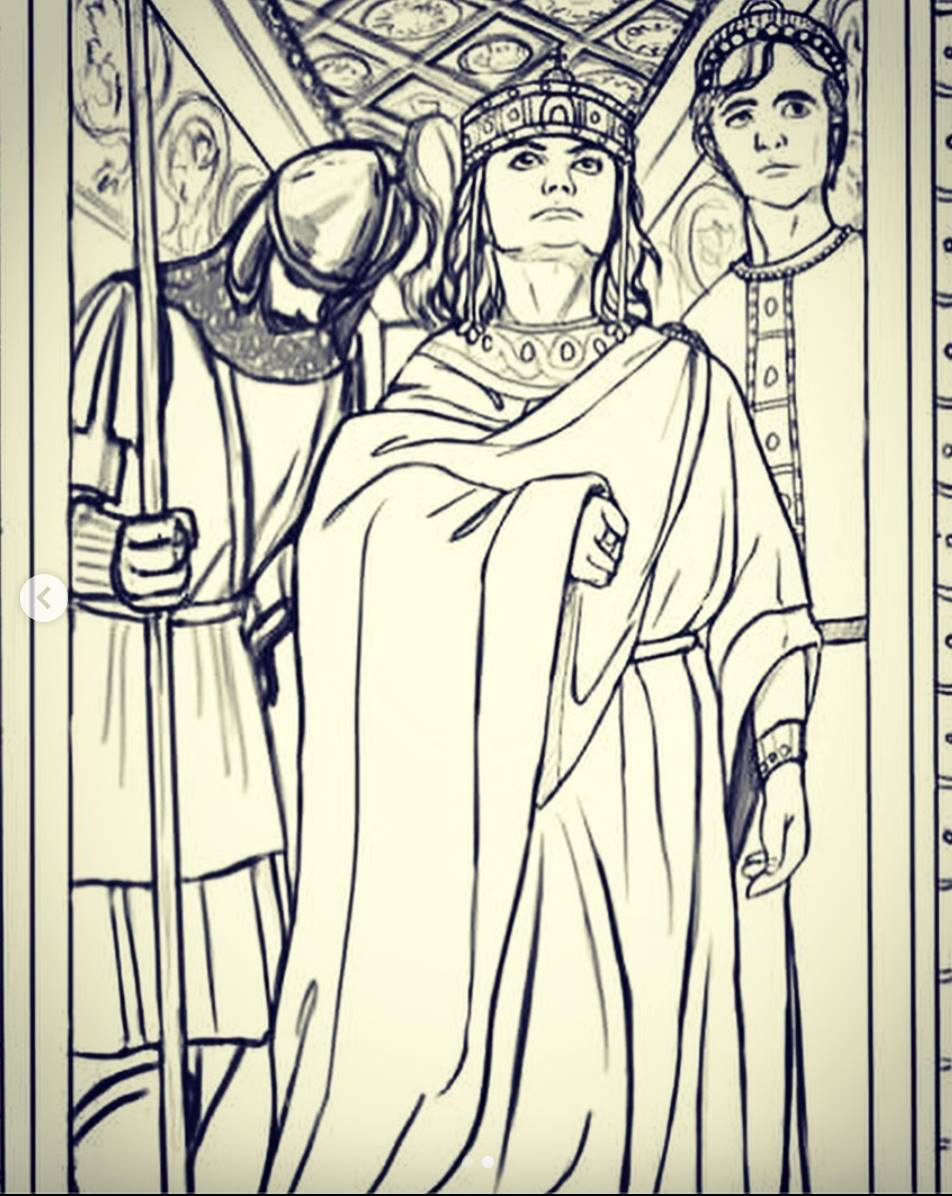
The brothers Basil and Constantine as well as their younger sister Anna in this novel meanwhile are basically shown as spoiled palace kids living their entire lives in luxury and mostly unaware of what is happening in the empire, but here in this novel we particularly get to see the character development of Basil from the spoiled palace boy he grew up as to someone determined to rule an empire. At the same time too, despite Basil and Constantine being the rightful rulers, there is only one throne and there is no guarantee they would one day rule Byzantium in their own right as the Byzantines never had a law on hereditary succession which made it possible for powerful generals to gain the throne if they had popular support. Meanwhile, one of the most intriguing characters in the novel I would say is the powerful eunuch minister and Basil II’s great-uncle Basil Lekapenos who had a major role in the previous novel, and just like in the previous novel, here he was still portrayed as the brilliant yet corrupt statesman who knew the very complex political structure and diplomatic tactics of the Byzantine Empire more than the 3 emperors John I, Basil II, and Constantine VIII did.

The character of Basil Lekapenos sure enough does make the readers always feel there is something suspicious about him despite Lekapenos being the one standing by the junior emperor Basil’s side most of the time as true enough he was depicted as someone who was such a scheming genius that he was able to forge the emperor John I’s signature that he could in fact confiscate the lands of other disloyal nobles and take it for himself behind the back of the emperor John, though at the end John true enough discovered Lekapenos’ corruption when seeing the lands he stole in Cilicia, and at the end you may even start questioning if Basil Lekapenos did indeed poison the emperor John I. At the end, following the death of John I, Lekapenos survived as in real history he basically dominated the early reign of Basil II until Basil II grew tired of his influence in 985 where he finally removed Lekapenos from his position, but overall Lekapenos is basically more or less the story’s antagonist as he was really the one causing all the trouble. Another character with an interesting angle in the novel is Bardas Skleros who is depicted basically as a fierce and powerful general and the emperor John I’s loyal right-hand-man as Bardas was in fact John’s brother-in-law, and at the end of the novel, Bardas’ strong undying loyalty to John Tzimiskes was made evident when Bardas after being demoted in rank by Lekapenos declared rebellion and his intention to usurp the throne from the young Basil II in order to both avenge John I who had just died but also to save the empire from the rule of the inexperienced Basil II and Constantine VIII and the corrupt Basil Lekapenos.
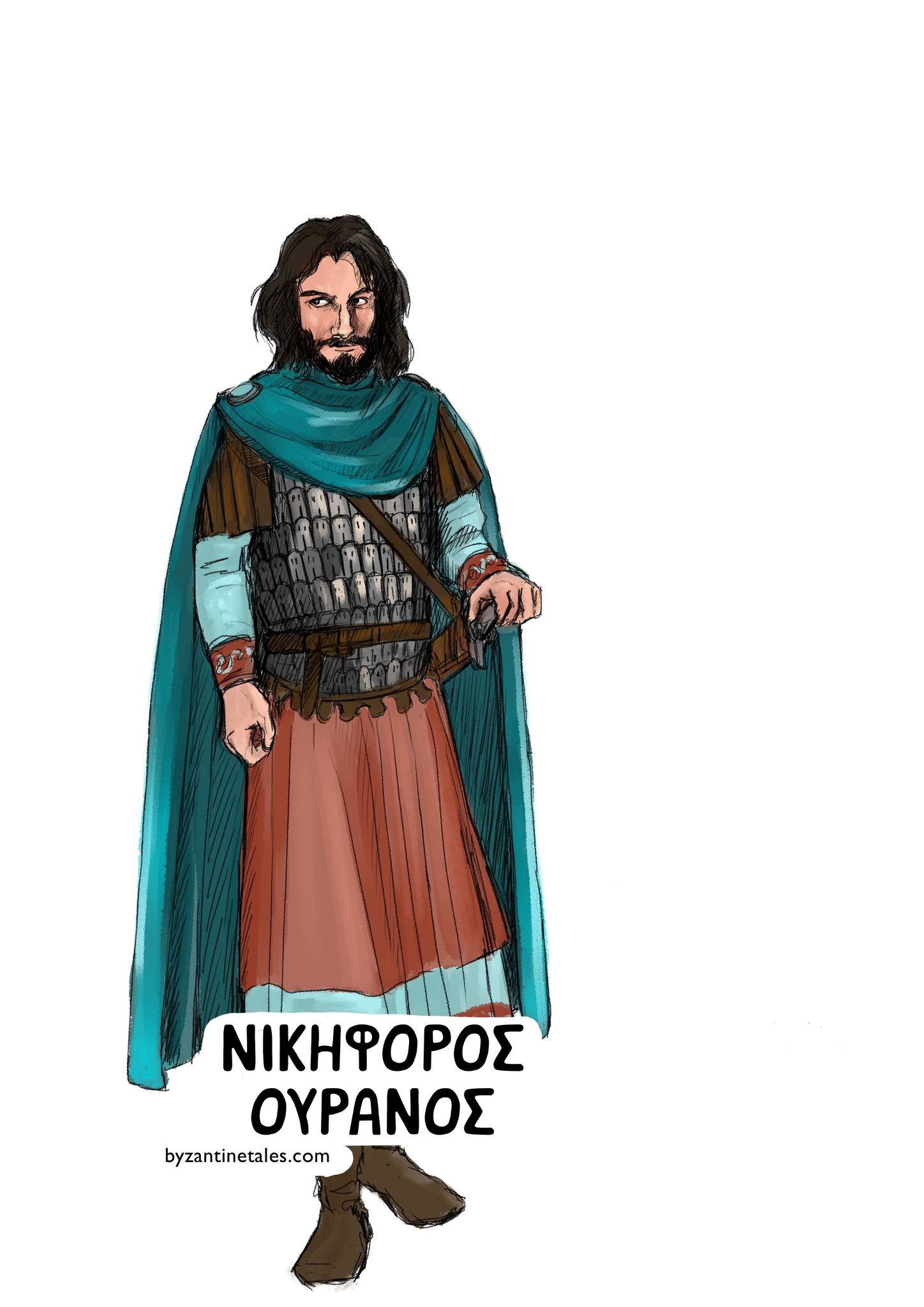
Aside from Bardas Skleros, the other character with an interesting character arc is the general Nikephoros Ouranos who is in fact a real historical figure as a loyal general to Basil II, although in real history Ouranos does not yet appear in the records in the 970s and is only first mentioned in the 980s, though here Ouranos is given a fictional angle being introduced way earlier on than in real history in the 970s as a way to highlight that he was already loyal to Basil II for quite a time. In the novel, Nikephoros Ouranos is depicted as a general who is somewhat a social-climber and a subordinate of Bardas Skleros, although unlike Skleros who was from a powerful political dynasty in the Byzantine Empire, Ouranos was basically someone that rose up the ranks in the army and historical sources too say he was a “new man” meaning that he did not come from the nobility and just rose up the ranks of society, and in the novel it was Ouranos too that brought Sigurd to Constantinople after befriending him, and thus introduced Sigurd to Basil, therefore allowing Sigurd a chance to serve the emperor. The other Byzantine generals who play quite a role in the story include the Doux of Antioch Michael Bourtzes who here was basically a loyalist of John Tzimiskes, the eunuch general Peter Phokas who previously back in 969 helped Michael Bourtzes capture Antioch, and the nobleman and retired general from Cappadocia Eustathios Maleinos, although in my opinion these generals were added to the story as a way to show that the Byzantine army plays a crucial role. Additionally, this novel does a great part in blending fictional characters into a historical setting not only through Sigurd but through another character named Ariadne, a young woman working in the palace as a handmaiden who becomes the lover of Basil, though when asking the creators, they say Ariadne is someone with some bits of a historical character, but that’s for later on.
The character arc of the Varangian Sigurd is a very fascinating one as it true enough is the driving force of the story. Where the story begins, Sigurd is a Varangian warrior- before the Varangian Guard became a unit in the Byzantine army- originally from Svealand, which was the old name for Sweden who left his homeland to fight for the Prince of the Kievan Rus Sviatoslav I journeying all the way south to Bulgaria where he witnesses his brother killed in battle by the Byzantines and following that is captured by the Byzantine army when Sviatoslav and his forces are defeated by the Byzantines at the Battle of Dorostolon, after which Sigurd is brought to Constantinople as a prisoner.

Due to Sigurd proving his bravery and skill in battle, he is recruited into the Byzantine army, particularly to the Hetaireia or the multinational mercenary corps of the imperial guard force or Tagmata which consisted of Rus, Scandinavian, Frankish, Khazar, Magyar, Pecheneg, Arab, and other races serving the emperor as his bodyguards. When arriving in Constantinople, Sigurd eventually grows accustomed to the more refined lifestyle of the Byzantines including drinking wine and spending time at the tavern after living a tough life from a cold land and fighting brutal battles. Sigurd then is introduced by his new friend the general Nikephoros Ouranos to the young junior emperors Basil II and Constantine VIII who at first make fun of Sigurd’s appearance and name which they find unusual, but later on Sigurd grows close to Basil as in this story Sigurd is the one who trains the young Basil II how to fight, but soon enough Sigurd has to prove his full loyalty to the emperor which is why he was forced to join John I’s campaign in the Middle East thus making this warrior from the distant cold lands of Scandinavia see a totally different part of the world, being the deserts of the Middle East. At the end of the novel, it is truly made clear that Sigurd had proven his loyalty to Basil II as when Bardas Skleros declares his intention to rebel against Basil II following John I’s death, Sigurd rushes back to Constantinople to protect Basil II as well as Constantine VIII from Skleros. Now this novel being the first chapter of a series is called “A Test of Loyalty” basically for this reason being that it was Sigurd’s test of loyalty while in the introduction section of the novel, a review by the host of the History of Byzantium podcast Robin Pierson says “Basil II is the ultimate Byzantine Emperor. A lonely figure who overcame endless scheming to become the master of his world. Through the eyes of Sigurd, his new bodyguard, we see Basil’s early years unfold. Each panel is beautifully illustrated to bring the emperor’s world into ours.” Indeed, when reading this story, through Sigurd we get to see the colorful and complex world of the Byzantine Empire in the 10th century in the perspective of a foreigner and Pagan from a land very different from that of the Byzantines. A warrior like Sigurd who comes from a cold, distant, and much more primitive place like Scandinavia- particularly what is now Sweden- true enough would be in awe seeing Constantinople which was the world’s most impressive city of the time, but in this story he is not only in awe with the splendor of Constantinople and how advanced the Byzantine Empire and its society was, he is also perplexed with the luxurious lifestyle as seen when he first wears Byzantine silk clothes, while he too is more perplexed with the complex politics of the Byzantine Empire including the political hierarchy and complicated bureaucracy, factions and political dynasties, the ruling system where there is not just one emperor in charge but two junior co-emperors, and all the intrigues such as the scheming and poisoning. Now to someone like Sigurd, all of these complexities the Byzantine Empire had would be something totally alien as where he is from everything is basically just blind loyalty to the ruler, and whatever the ruler would say is the law unlike in the Byzantine Empire where despite the emperor being the absolute ruler, he could still be challenged, thus by this, people nowadays can see a clearer image of the Byzantine Empire especially by being viewed by Sigurd who is very much like us readers today being foreigners viewing a very mysterious empire which was Byzantium. According to the creators, Sigurd was created for the story to serve as a link from the opening sequence being the Battle of Dorostolon to the private life of the titular character Basil II.
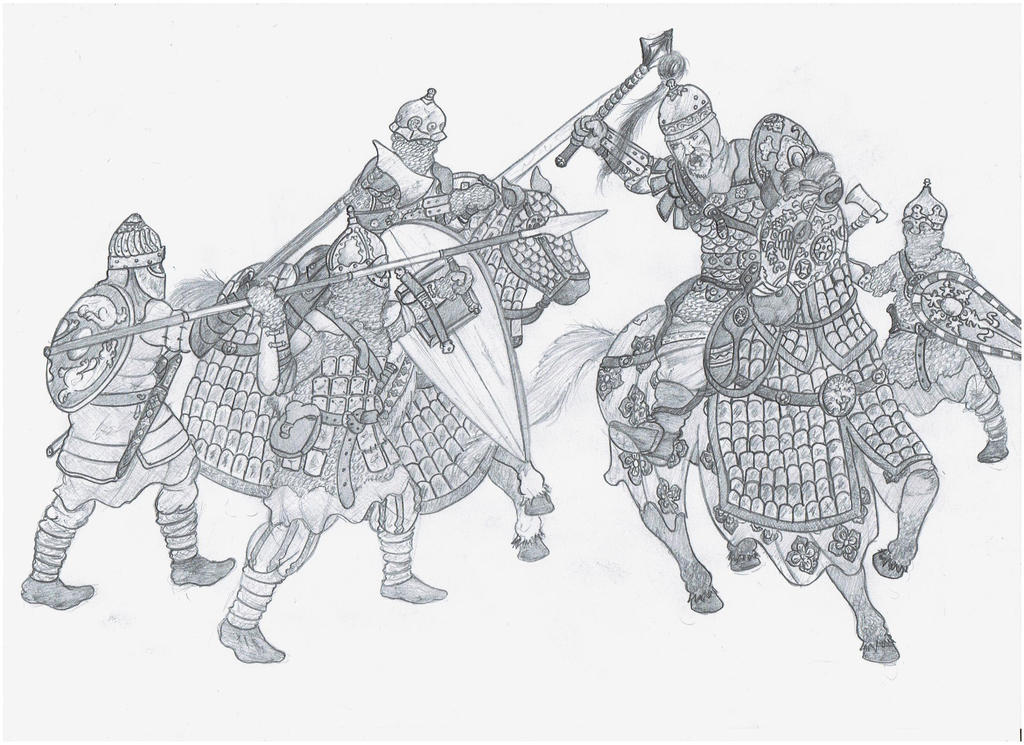
We too get to see the legendary Basil II the “Bulgar-slayer” from another angle by seeing him in his younger years. Now most people who know Byzantine history would always remember Emperor Basil II (r. 976-1025) as an older man being the fierce warrior-emperor that personally led his troops in battle, defeated and conquered the Bulgarian Empire, and blinded thousands of Bulgarian captives.
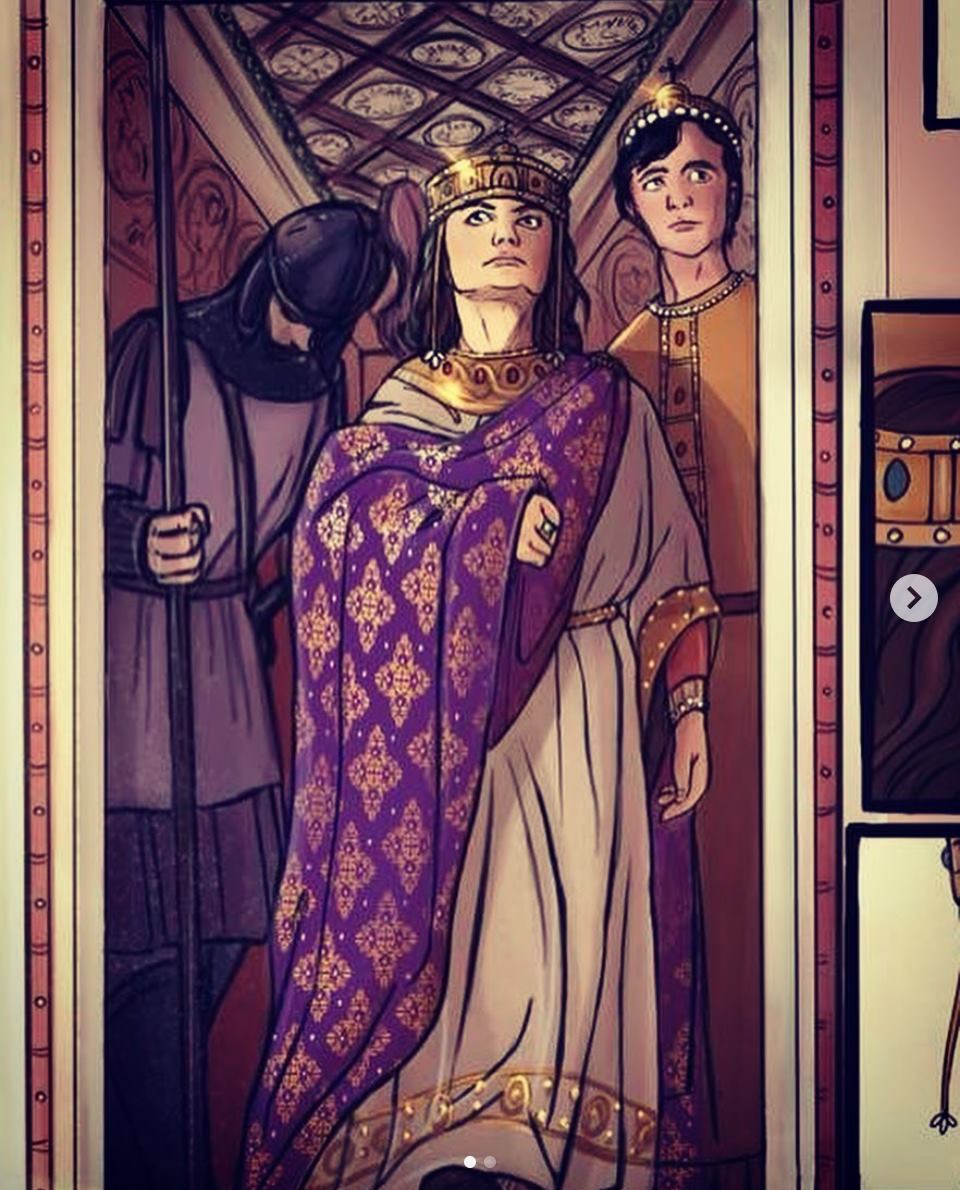
However, not a lot know that Basil II began out as a spoiled and weak palace prince living in luxury being the son of the pleasure-loving emperor Romanos II (r. 959-963) and the seductive and scheming empress Theophano. Where the novel opens however, Basil is already in his teenage years whereas his father Romanos II had already been dead for years- since 963- while his mother Theophano had been exiled as she was framed for organizing the conspiracy to kill her second husband which was Basil II’s stepfather Emperor Nikephoros II Phokas (r. 963-969). Basil II now however had already appeared in the previous novel wherein his mother Theophano was the lead character, but there his part was very minor, though in this novel despite Basil being the titular character, he does not appear as much as Sigurd does as basically Sigurd appears throughout the entire novel. Although Basil II does not appear at every scene, his character development was done in such great detail as when he is first introduced here, he is first seen as the spoiled palace prince when he mocks Sigurd, but later on his character is seen to actually be more and more complex appearing as a conflicted character as true enough Basil had already been through so much despite being only teenager such as his father Romanos II being poisoned when he was only 5, his stepfather Nikephoros II being murdered in his sleep, and his mother Theophano banished. History too does not mention much about Basil II’s early years; thus this novel does a great job in accurately describing Basil II’s younger years growing up in the palace including his relationships with his new father figure the senior emperor John I Tzimiskes, his great-uncle the eunuch Basil Lekapenos, his new bodyguard Sigurd, and with his brother Constantine and sister Anna.

Whether Basil’s younger years in this novel is historically accurate or not, I still think that this was more or less what his younger days in the imperial palace was like. As the story progresses, we get to see that Basil was also trying to figure out his life and what he would excel at as he was not as tall, fast, and lucky as his younger brother Constantine as shown when they raced against each other and betted on horses racing in the Hippodrome, and neither did Basil excel in his studies the way Constantine did. However, Basil would later on turn out to discover what interested him and something he would excel at being sword fighting which he learned from Sigurd. The young Basil though appeared here as somewhat cocky when believing he could excel as a warrior due to his great-great-grandmother the 9th century empress Eudokia Ingerina being the daughter of a Norseman like Sigurd and with his mother Theophano having Spartan blood. Despite finding out what he was good at, he would still be upset first because he could not live up to his expectations to be something like his late stepfather Nikephoros Phokas and his new father figure the emperor John Tzimiskes in terms of combat skills, and following that he was more upset because he still had no say in doing anything as seen when Sigurd was forced by Basil Lekapenos to join John’s campaign in the Middle East to prove his loyalty. For most of the final third of the novel, Basil does not appear as most of the attention is on John I and only after John’s death in 976 does Basil reappear now being crowned as the new senior emperor at age 18 being backed by Lekapenos wherein he puts all his trust in Sigurd to defend him as John’s sidekick Bardas Skleros who had gained a strong following had now risen up in rebellion against Basil.

Though Basil had developed into a more determined person where the story ends, he is still not yet the strong warrior emperor that struck fear into his enemies and other nations around Byzantium that we remember him as, as true enough he has a long way to go before becoming this person as prior to his full conquest of the entire Bulgarian Empire in 1018, Basil II defeated all opposition against his rule, created a new force in the Byzantine army known as the Varangian Guard, and ensured that the empire was fully loyal to him. On the other hand, this novel too greatly humanizes Basil II who we all view as this ruthless military emperor that never married as true enough, we get to see Basil falling in love here with Ariadne, although some sources say the young Basil II was a womanizer and only as he aged did he distance himself from women and never fall in love as he dedicated his entire life to the army.

Other than Basil, we get to see a lot of Basil’s younger brother Constantine and younger sister Anna in the novel, and the story too does give more justice to Basil’s brother Constantine who history always remembers as Basil’s incompetent and good for nothing successor as with Basil dying childless in 1025, Constantine VIII succeeded him and basically ruined all of Basil’s achievements by not ruling as strongly and wisely despite ruling for only 3 years (1025-1028). According to the creators, they showed Constantine VIII as a more capable person by showing that he excelled more in his studies than Basil basically because historical sources too say Basil was not an intellectual but his brother was, though the creators portrayed Constantine as someone more intellectual and capable too in order to give more justice to him as history depicts him unfairly as a pleasure-loving and good for nothing fool, though the author Spyros too says that some sources depict Constantine as someone more capable than he was remembered as, except that Constantine was just not interested in running the government. Basil and Constantine’s sister Anna too makes quite an appearance in the novel as a spoiled and playful young girl without any much interest in the empire but little would she know here that she would one day be destined to marry the Prince of the Kievan Rus Vladimir the Great which would be instrumental in sealing the Byzantine-Rus alliance and converting the Rus people to Christianity.

The splendor of Constantinople including landmarks you may have not heard about are shown in great detail including the most private parts of the palace. This way, this book too is a guide not only to the complex politics of the Byzantine Empire but to the complexities of its imperial capital going as far as to the most private parts of the imperial palace. At the book’s back cover, Dr. Georgios Theotokis as part of his review on the novel says “This is a wonderfully illustrated journey into a world where few and privileged people had access to- the world of the imperial palace. A world of machinations, behind-closed-doors-politics, and intrigue. A violent environment in which survival depended on military virtues, ruthlessness and diplomatic maneuvering. That’s where young Basil had to ‘grow up’ and rule an empire.” Truly, in this novel we get to see the deepest parts of the imperial palace which otherwise no one except for the most powerful and closest to the emperor at that time could see which includes places like the courtyards of the imperial palace with its intricate fountains, throne room, banquet halls, the palace complex’s own private covered Hippodrome, and the imperial university in the palace known as the Pandidakterion as well as the Byzantine scriptoria which was the place in Constantinople that preserved the knowledge of Ancient Greece and Rome as here scholars had endlessly copied many Ancient Greek and Roman literary works, and true enough this was a major legacy of Byzantium as at the end Byzantium’s role was in really preserving the Classical knowledge of Greece and Rome that later in the 15th century influenced the Italian Renaissance.

These locations mentioned here definitely shows how lavish the lives of the Byzantine Empire’s rulers were and how much power they had- though sources remain unclear if the palace’s private covered Hippodrome existed as instead according to the artist Chrysa she was requested to draw it- but other than showing these places, you also get to see locations in Constantinople that existed then that you may not have heard of such as the structure at Constantinople’s main street the Mese which was the Anemodoulion, a 4 columned arch with a pyramid above and a statue above it that served as a sort of weather vane and this is the first location of Constantinople in the novel. Other than this, the novel also shows a small but lavish church in Constantinople which was the Church of Christ Chalkites at the entrance to the imperial palace complex built originally as a small chapel by Emperor Romanos I Lekapenos (r. 920-944), the great-grandfather of Basil I and father of Basil Lekapenos, while John Tzimiskes rebuilt it at a much larger scale. These two locations in Constantinople which appear in this novel happen to first appear here as in the previous novel they do not make an appearance and so do the parts of the imperial palace that I just mentioned. On the other hand, other locations that made an appearance in the previous novel Theophano also reappear here such as the more famous ones like the Hagia Sophia cathedral wherein both the interior and exterior are shown in the novel, the Hippodrome of Constantinople, the Hagia Eirene church, Imperial Palace complex, the square beside the Hagia Sophia known as the Augustaion which featured a column with a large equestrian statue of Emperor Justinian I the Great (r. 527-565) above, and the main street known as the Mese. One location in Constantinople though that did not appear in the previous novel but only made its first appearance here is the Forum of Constantine with the famous Column of Constantine at the center appearing at the last page, and here it accurately shows what it looked like then as in the 10th century the massive statue of Constantinople’s founder Emperor Constantine I the Great (r. 306-337) was seen above it in the form of the Greek sun god Helios. Now despite some locations like the city’s Hippodrome having appeared in the previous novel, here some extra details were added to it that otherwise did not appear in the previous novel like the fountain at the center of the Hippodrome with a statue of the Byzantine empress Irene of Athens (r. 797-802) at the center of it.
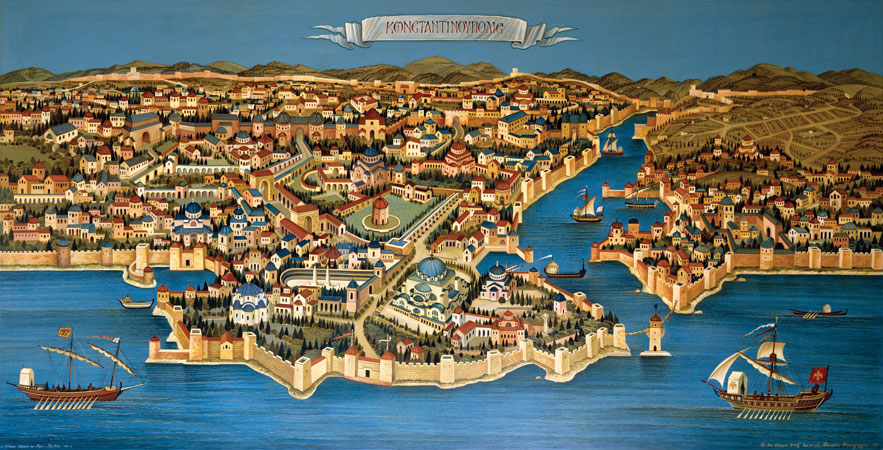

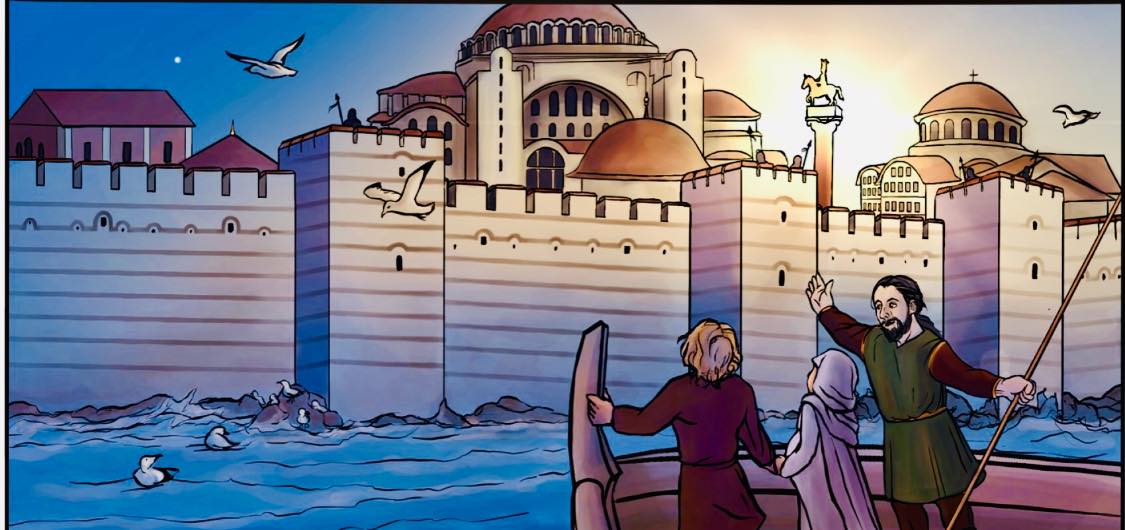
It contains many Easter Eggs of Byzantine era objects and parts showing slices of life in Byzantium at that time thus giving readers a sense of what life was like then. This then makes this novel not only all about Byzantine politics, diplomacy, and warfare, but it also shows what ordinary life was like not only in Constantinople but for the Byzantine army campaigning across the empire.

At first when the novel opens, you already get to see a variety of Byzantine war flags used in battle as well as the special elite cavalry force known as the Athanatoi or “Immortals” which here was commanded by John I’s loyal general and sidekick Bardas Skleros. When the scene shifts to Constantinople, you will see courtiers dressed in unique clothes and hats the way they appear in the illustrated primary source of that time which was the Madrid Skylitzes, then following that even the smallest details are included such as what kind of wine they drank as here it is said that the local wine of Constantinople was of bad quality as compared to the wine from other regions in Asia Minor such as one from Kyzikos which was shown later on which Sigurd drinks at the tavern finding it way better than the local Constantinople wine he tasted earlier on that Nikephoros Ouranos made him drink. According to the creators, the History of Byzantium podcast host Robin Pierson says that one source said the wine from Constantinople was of poor quality because of the climate and generally Istanbul today doesn’t have a good climate for growing grapes thus producing bad wine. In the novel, we definitely see a slice of ordinary life in Constantinople at a tavern where Sigurd after wearing Byzantine silk clothes for the first time as well as drinking the good quality spiced wine from Kyzikos plays the ancient boardgame of Tabula– which was in fact a popular Byzantine era game that the 5th century emperor Zeno (r. 474-491) enjoyed playing- and is an ancestor of today’s backgammon, while the tavern scene too shows another Byzantine era Easter egg which was the popular condiment garum that was usually put in almost every savory dish they had to give it extra taste, and other than that the tavern scene also shows a number of beautiful women dressed in loose and revealing dresses exposing a lot skin which also gives a rather sexy element to the story.

Later in the story, you get to see the lavish lifestyle in the imperial palace and houses of politicians and generals across the empire, the lavish food they ate, the expensive wine they drank, and the expensive and colorful silk clothing they wore. Later on, a scene with Basil Lekapenos reading a letter shows another Easter Egg, which here is an image from the Madrid Skyltizes, the famous chronicle illustrating events of this time. A majority of the latter part of the novel meanwhile shows a recurring element being a comet in the sky that does not only appear in one but many panels which the creators say that primary sources of this time mention that this shooting star was visible for 4 months straight, which is why it kept recurring. This comet was also shown here as a grim omen that terrible events were to follow wherein war will ravage Byzantine lands, and true enough the novel did end that way as when John Tzimiskes had died, civil war would begin as Bardas Skleros declared his intention to usurp the throne from Basil II. At the latter parts of the novel, you will also get to see a slice of life at a Byzantine army camp or Aplekton wherein the emperor which here was John Tzimiskes was at his own lavish purple tent and everyone else around in white tents, and during the night soldiers which in this story including Sigurd sat around a campfire sharing information and gossiping. One very small piece of Byzantine trivia too is discussed in the scene where soldiers sit beside a campfire which is a mention of the hard and dry bad quality Byzantine bread of the time known as paximadion and a treat then known as placenta cakes or koptoplakous which was a Byzantine desert which evolved to becoming today’s baklava.
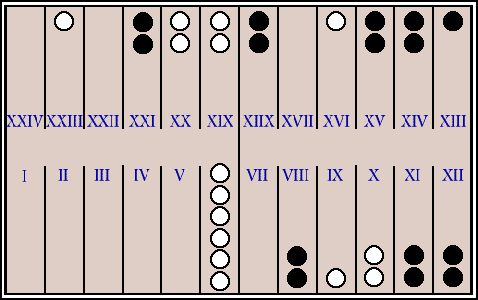
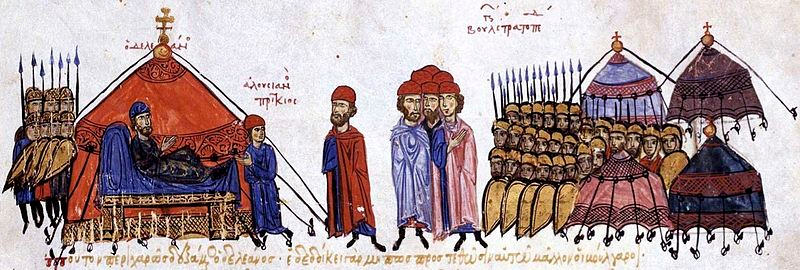
It remains very authentic to the era and is based on a large number of primary and secondary sources that true enough the word “Byzantine” or “Byzantium” is never at all mentioned in the novel the same way as it was in the previous one “Theophano”. The term “Byzantine” and “Byzantium” true enough was only first coined in the 16th century, a century after the fall of Byzantium (1453), therefore to make the story more authentic, “Byzantine” wasn’t used and instead simply “Roman” wherein the Byzantines are simply referred to as Romans and the Byzantine Empire as the Roman Empire, as true enough the Byzantines really called themselves Romans (Romaioi in Greek) and the empire as the Roman Empire (Basileia ton Rhomaion in Greek), and in the novel foreign characters- namely Sigurd- refer to the Byzantines as the Romans.

Other than that, if not for fictional elements like Sigurd, Ariadne, or the unrecorded early career of Nikephoros Ouranos in the 970s, you can really tell that a lot of the information is factual as at the end of the book, there is in fact a list of primary and secondary sources that the novel and elements in it were based on while the author Spyros did a lot of research reading the primary sources. The primary sources for this graphic novel include the chronicles of 10th century author Leo the Deacon and 11th century author John Skylitzes in which the latter’s chronicle is the same well-known illustrated chronicle we know as the “Madrid Skylitzes” in which both these historical authors were used as the source for the important events of this time such as John Tzimiskes’ wars in Bulgaria and the Middle East as well as the rest of his reign. On the other hand, these chroniclers I mentioned do not record anything about Tzimiskes’ last campaign where he went as far as Palestine and came so close to capturing Jerusalem from the Arab Fatimid Caliphate, instead the only source for Tzimiskes’ last campaign of 975 was a letter he wrote to an Armenian lord, thus scholars still doubt if his armies ever reached the Holy Land. As for information on Basil II’s early life, the source for this was Michael Psellos’ chronology written in the 11th century which happens to be the only source offering a description of the young Basil II whether it is reliable or not as the author Psellos never personally met Basil II, although Psellos based most of his information on Basil from the emperor he was serving which was Isaac I Komnenos (r. 1057-1059) who personally knew Basil when he was young as Isaac was one of the many children of deceased generals who were practically raised by Basil II as his “children” as Basil who did not have a family sponsored many young men hoping they would be educated to be great generals. For the court ceremonies and court attire seen in the novel, the source for this was De Ceremoniis which was written by Basil II’s grandfather Emperor Constantine VII Porphyrogennetos (r. 913-959). Lastly, the Patria of Constantinople was another primary source which was used for information on the smaller details such as the statues and some buildings that existed at that era in Constantinople. Meanwhile, a large number of secondary sources being modern day books were used for additional information for the novel and some of them included books I have read as well like Streams of Gold, Rivers of Blood by Anthony Kaldellis which does a great job in explaining Byzantium and its complex politics and military structures in the 10th and 11th centuries. On the other hand, the History of Byzantium by Robin Pierson too played a major role in the creation of the story by giving information on these primary sources, and another person too who had a large role in creating the story was author Eileen Stephenson who basically did the final editing of the texts. Using a large number of sources both primary and secondary thus shows that a lot of effort too was put into creating the story and not just the illustrations which surely makes it a true authentic Byzantine novel.
The illustrations of some characters are actually based on real life actors which therefore makes the novel more engaging to read especially if you notice that some characters resemble famous actors. For instance, the artist Chrysa says that the appearance of Nikephoros Ouranos in this novel was based on the appearance of Christian Bale while the appearance of the general Peter Phokas who although appears very quickly was based on Rami Malek, both being international celebrities. Other characters were based on the appearances of Greek and Turkish actors and actresses including Theophano from the previous novel in which Chrysa says her appearance was made to resemble that of Turkish actress Beren Saat. Chrysa on the other hand said that some characters namely Tzimiskes and Basil II were based on historical sources which the author Spyros finds, although Chrysa sometimes tweaks their appearances a bit to make them appear more distinct, but at the same time she also said she tries to avoid making a lot of characters- especially the lead ones- look like famous actors as it could distract and disorient the reader making them see these characters not as who they were like Basil II or John Tzimiskes but as the actor that they resemble. Some historical characters in the novel like Basil’s younger sister Anna Porphyrogenita meanwhile have no records describing their appearance, thus the character of Anna as Chrysa said was drawn to resemble a crossover of her parents Romanos II and Theophano from the previous novel. For me, I personally think that having some characters in a graphic novel like this resemble famous actors is a great touch as it could get its readers more and more engaged in reading it, therefore since I would not be doing a fan casting in this article, this section was basically something like a fan casting!

It has a suspenseful ending that hooks you up for a sequel which I would say is a good thing as a lot of great movies or episodes of a series with a follow-up always end with a cliffhanger. The ending of the previous novel Theophano meanwhile did not have so much of a “cliffhanger” element where it ended, as back then it was most likely unclear if it would have a sequel. This novel however ends suspensefully with the death of Emperor John I Tzimiskes wherein you could already suspect that Basil Lekapenos had slowly poisoned him as Lekapenos started fearing John was growing more independent and could remove him from power when it was in fact Lekapenos who helped make John emperor back in 969 by supporting him in murdering Nikephoros Phokas.
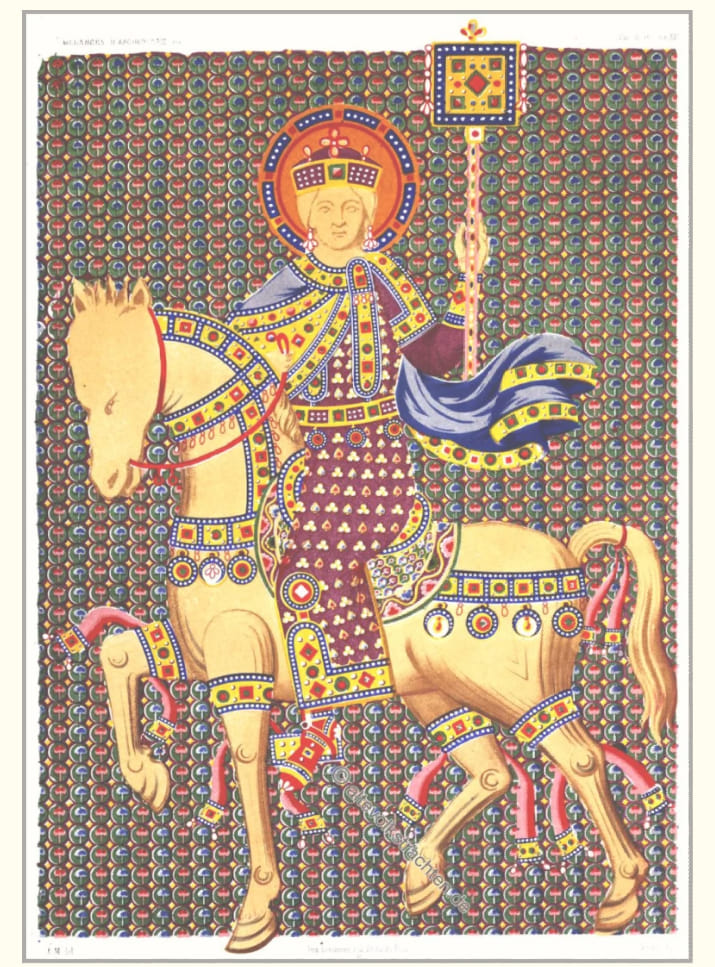
The story’s climax part features Tzimiskes’ final campaign in Syria and Palestine in 975 with Sigurd as well as Bardas Skleros joining it, although the army never made it to Jerusalem in which John had promised that they would capture it in the next year as one-night John fell ill, and when two doctors came to his tent you could already suspect that they were sent by Basil Lekapenos to poison him. However, it took John some time to die as for weeks, if not months he grew sicker and sicker as he was travelling back to Constantinople and when returning he first finally realized that Basil Lekapenos stole some estates from other nobles which therefore made John rush quickly back to Constantinople to put an end once and for all to Lekapenos’ greed, though before returning to the capital another suspicious event had happened when a doctor came in again this time at the residence of Maleinos in Cappadocia to give the emperor medicine which could have in fact been again covered up as poison sent by Lekapenos which was then poured into the emperor’s wine. When John had returned to the capital, it was already obvious that the second dose of the poison further weakened him and thus John knowing death was near spent his last few days cleansing his soul by giving away money to the people, preparing his own sarcophagus, and confessing his sins to a figure who appears to be the Patriarch of Constantinople, and thus as the year 976 began he died.
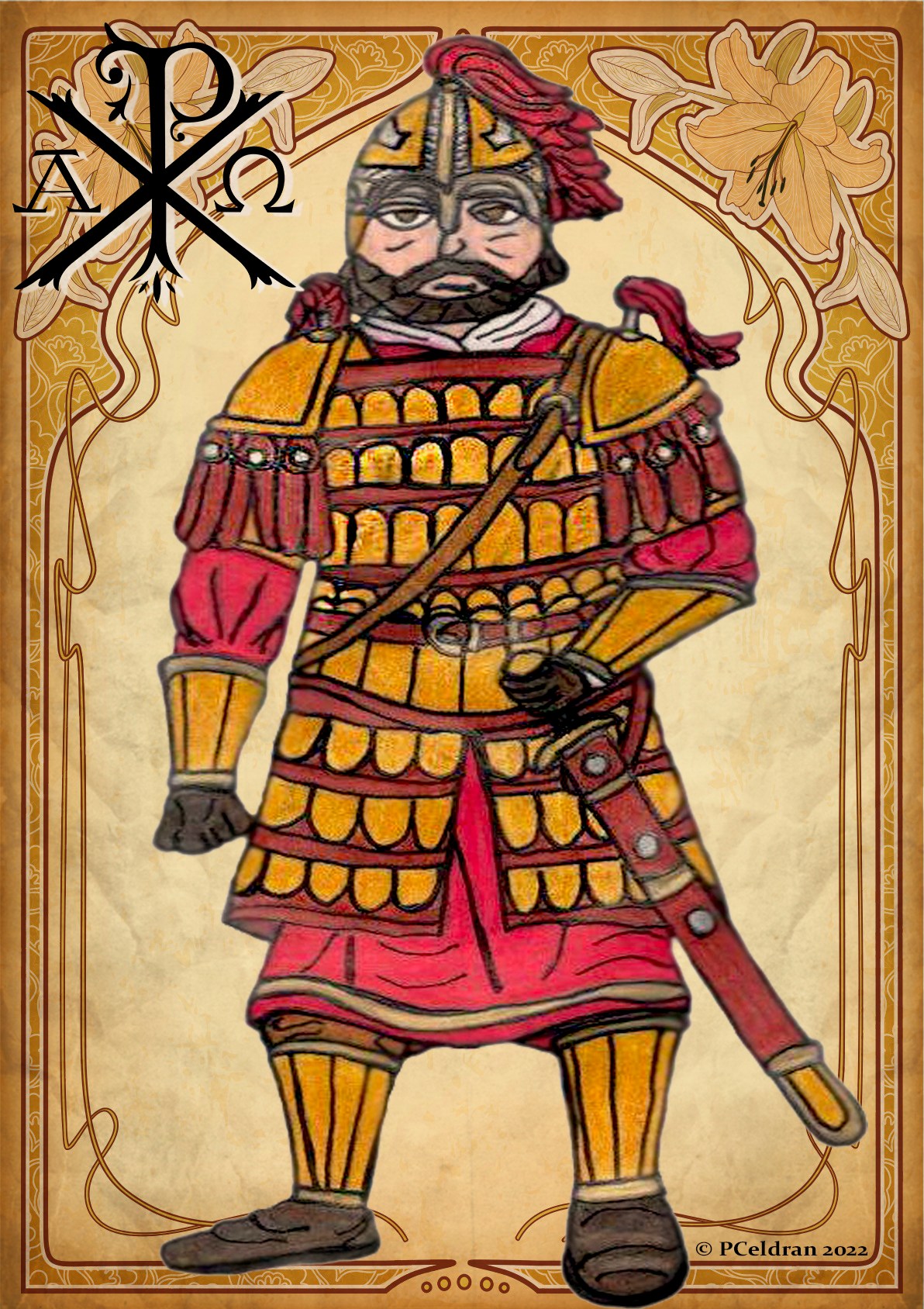
Following John’s death, Bardas Skleros who returned with him to the capital was demoted in rank by Lekapenos which Bardas did not take lightly because Bardas in fact believed he would be John’s successor as he was a strong general but he felt betrayed as Lekapenos already struck first even gaining the loyalty of John’s other loyal general Michael Bourtzes. Bardas when feeling betrayed then travelled east to Melitene where he declared rebellion against the newly crowned senior emperor Basil II who Bardas felt was incapable while many soldiers including Arabs and Armenians too joined Bardas’ cause and recognized him as emperor as they had grown tired of the corruption of Basil Lekapenos and did not want to be ruled by weak palace emperors like Basil II and Constantine VIII and instead wanted to still be ruled by a strong general like Nikephoros Phokas and John Tzimiskes, thus they all saw Bardas as their emperor. Sigurd however who was with the army camped in Melitene refused to recognize Bardas as emperor and this was when he proved that his loyalty was to Basil thus making him rush back to Constantinople wherein the new senior emperor Basil made him a full member of the imperial guard. Now the ending was basically a cliffhanger because first of all the novel ends with Basil II now as the senior emperor and Bardas Skleros rising up in rebellion whereas Sigurd was now fully committed to protect Basil and the imperial family- or what was left of it- though at the final scene, it is now fully evident that Basil Lekapenos is the true villain as he said he was done with strong military emperors therefore suggesting he poisoned Tzimiskes, and at the end Lekapenos also says he will be the one fully in charge with Basil just his puppet not knowing that Basil would one day become his own emperor and eventually get rid of Basil Lekapenos himself, but that is a story for another time. Now with the ending being a cliffhanger, my theory is that the next novel of this series would begin wherein the civil war between Basil II and Bardas Skleros breaks out wherein as I remember from real history that Lekapenos released a powerful rival being Bardas Phokas, the nephew of the late Nikephoros II from prison to battle Skleros while I too think that Theophano would return at the early part of the next novel as it is known that she returned to living in the imperial palace when her son Basil became the senior emperor in 976, though I also believe that this would possibly be the only role of Theophano in the next novel and after that she would disappear from the scene. For the next novel and the upcoming ones, I would definitely want to see more character development from Basil as well as his future battles and foreign conquests.

Opinions, Suggestions for the upcoming novels, and Conclusion

Overall, I would say that this novel being the first part of the “Basil: Basileus” series is both an excellent follow-up to the previous novel “Theophano” and a perfect starter for this upcoming series by Byzantine Tales.
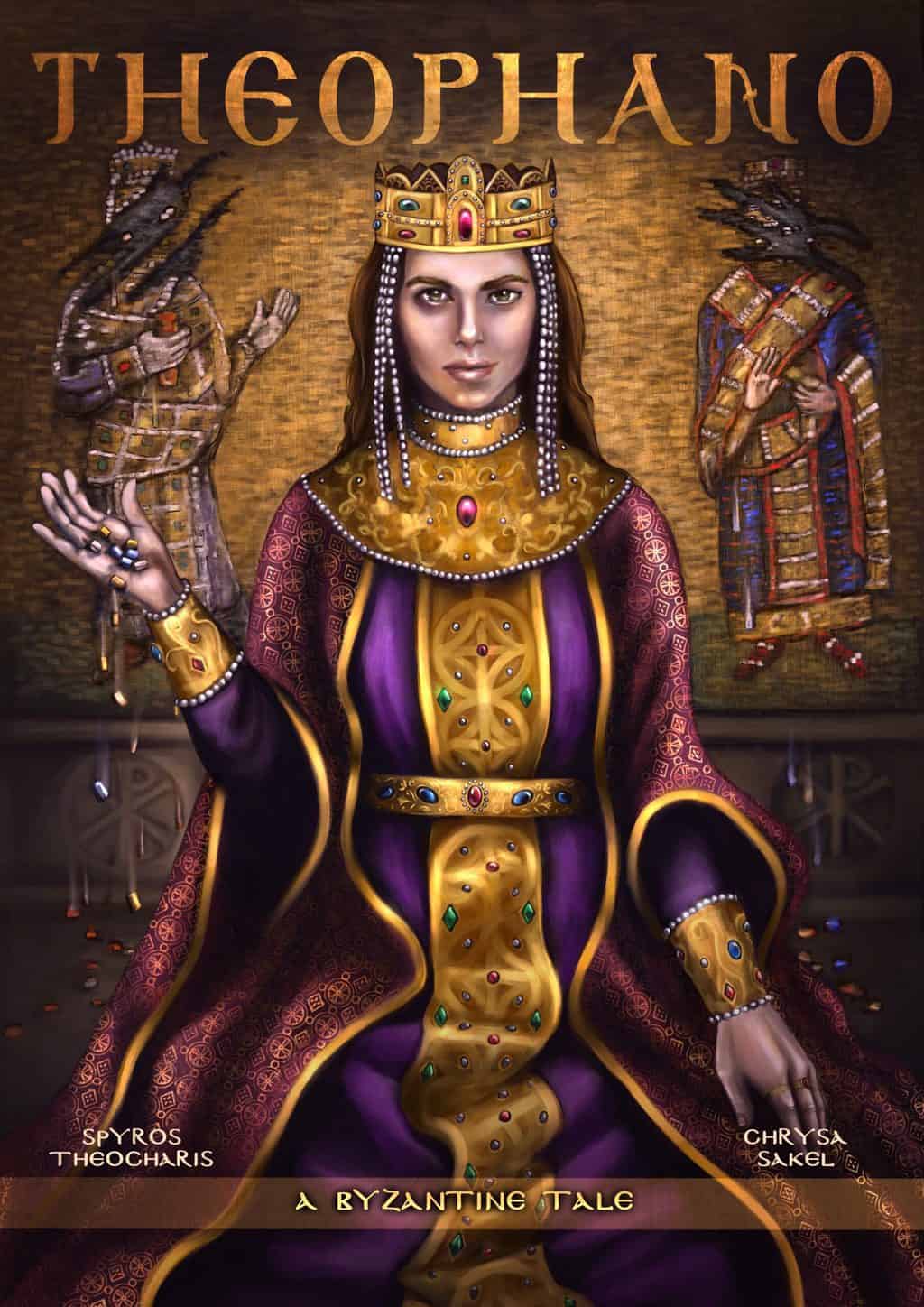
First of all, it is a good sequel because it shows a lot of continuity from Theophano including characters, locations, designs, and of course the complex Byzantine court politics that were featured in the previous novel while at the same time it also does not repeat too much elements from the previous one, therefore showing that the story really moved on. What I mean too that it does not repeat too much things from the previous novel is that this one does in fact show new locations in Constantinople and across the empire that otherwise did not appear in the previous one, thus showing that more creativity and effort was put into the story. On other hand, what I mean to say here by this novel continuing the previous one is that it really shows a lot consistency in its theme as the previous novel really had a lot to do with the complex and very thrilling Byzantine politics of the 10th century as well as a very action-packed narrative, though I would say too that the previous novel Theophano was something more like an introduction to this whole Byzantine universe created by Byzantine Tales wherein the fascinating yet complex world of the 10th century as well as its characters, locations, and situations are introduced while in this novel being the first part of the Basil series, you would already find yourself with the world introduced in the previous novel, therefore I would say that in order to fully appreciate this novel, one must read Theophano first.

Of course, you can always start with the Basil novel and get to know its Byzantine world as you read along, but if you want to fully understand the whole story, one must read Theophano first as in my case, when I read Basil, I was already very familiar with its characters and premise, not only because I am familiar with Byzantine history but because I already read Theophano prior to that. Now as I said that this novel is a perfect starter for this new upcoming series, what I mean here is that it did an excellent job first in introducing the emperor Basil II who would be the lead character for this series and here we get to at least see where he started out being a rather weak, spoiled, and inexperienced prince, thus when reading the novel, it would really hook you up to get so see Basil’s character development into one day being the tough and fierce warrior emperor that many who know Byzantine history remember him as. This novel too I would say gets viewers oriented with the new world order for the Byzantine Empire from the 970s onwards including the new rivalries such as that between Bardas Skleros and John Tzimiskes’ faction against Basil II’s faction which includes Basil Lekapenos, the new schemes, new battles, and so much more, and the next books for this series I can tell would be really exciting as the latter part of the 10th century truly got more and more exciting especially with all the civil wars Basil II would face in which he won at the end thus shaping him up to be a stronger ruler.
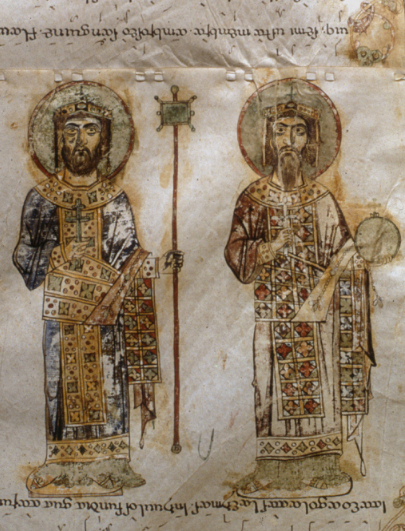
At the same time, I would also say that this novel does not only hook you up with Basil’s character but with Sigurd as well as I mentioned earlier that he had a very great character development, and in the next novels of this series I do hope to see more character development from Sigurd as well as from Basil. Lastly, what I very much found interesting in this novel was not only how well detailed the battles of this era were but the complex politics which was surely brought into life including the rivalries between the powerful political dynasties of the Byzantine Empire in that time, the corruption and betrayals, and the ambitions of powerful military men like John Tzimiskes and Bardas Skleros. Overall, I would also say that the creators of the novel did the right move in choosing the 10th century as its setting- the same said for the previous novel Theophano too- as not only is the 10th century my ultimate favorite era in Byzantine history but it was the most complete since it featured everything that makes Byzantine history what it is from the epic battles, interactions with other people such as the Rus and Arabs, the very intriguing imperial politics and corruption in the imperial court, and the impressiveness Constantinople had as this was when Byzantium was at its height not only in military but cultural power.

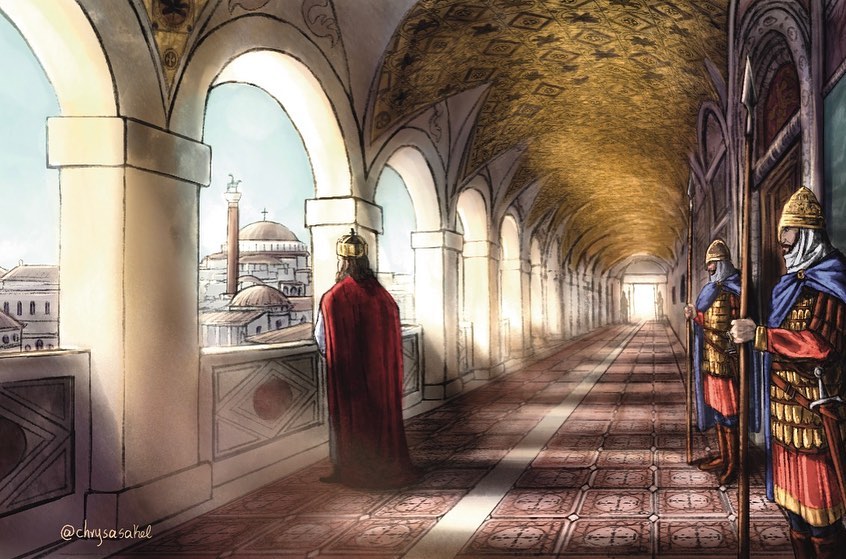
On the other hand, no matter how much I found this novel being the first part of the “Basil: Basileus” series very fascinating, I still have some criticisms about it including my own opinions on how it could be made better as overall this review that I am writing here is made to be an honest one. First of all, I noticed a lot of scenes from the 970s wherein the story was set in left out including the battles of John Tzimiskes and more about his personal life. For instance, this novel basically skipped the first year and a half of his reign (970-971) which included the events following Nikephoros Phokas’ assassination, the first rebellion of Nikephoros’ nephew Bardas Phokas against Tzimiskes which failed, and the beginnings of his campaigns against the Rus in Bulgaria, but I understand too that these events were omitted as it would make the novel too long wherein it was meant to be a much shorter one, plus it was also better that the beginning already fast-forwarded to the campaign against the Kievan Rus’ in 971 to give it a much more epic opening.
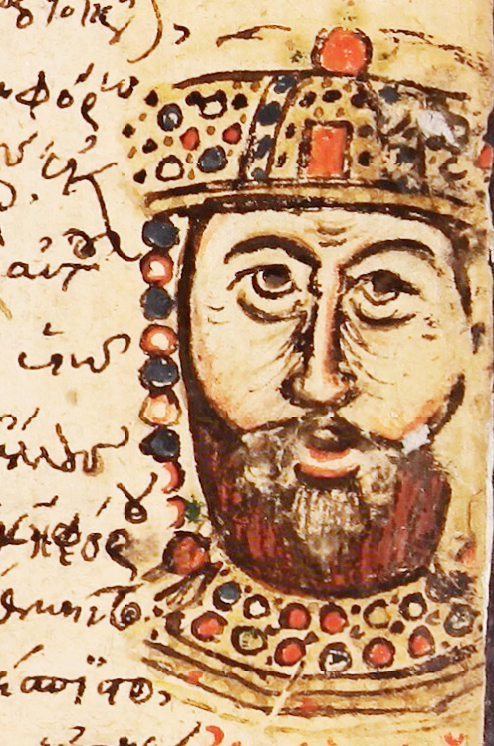
Another thing too that I wish was added to the novel was a Bulgarian angle that would actually show the Bulgarian tsar Boris II captured by Tzimiskes in 971 and paraded in Constantinople afterwards as true enough after Sviatoslav’s Rus’ forces were expelled from Bulgaria by the Byzantines, the Bulgarian tsar who was a captive of the Rus surrendered to Tzimiskes and was brought to Constantinople as a captive. The novel however did not show Boris II captured but instead just mentioning that Tzimiskes conquered Bulgaria thus surrendering the Bulgarian crown at the Hagia Sophia therefore hinting his Bulgarian conquest, but if I were to rewrite it I would at least show the Bulgarian tsar Boris II to really show that the Byzantines for the meantime captured Bulgaria as some years later Bulgaria would strike back in which Basil II would do the job of once and for all conquering the Bulgarian Empire. Other than showing a Bulgarian angle briefly, I also wish the novel showed more of John Tzimiskes’ personal life as emperor most especially his wife who was actually the twin sister of the previous emperor and Basil II’s father Romanos II, which would therefore show more continuity from Theophano, although again this angle was removed as it would further complicate the story if it were added by putting too many details that may seem unnecessary. I too wish that John Tzimiskes’ campaigns against the Arabs in the Middle East would be shown in more detail, but at the same time I find it good enough that the creators decided to show some scenes in the Middle East while adding some more details on Tzimiskes’ campaigns too would also further complicate things as not only would it make the story longer but because sources aren’t very clear as well on what exactly happened in that campaign of his. Other than these scenes that I mentioned wherein I would want to add some more into them, everything else in the story is fine the way it is and therefore I would not want to add or remove anything from it. However, if I were to say something negative about the novel, it would be on how I noticed that the illustrations of some characters are basically just recycled from the appearances of characters from the previous novel such as for example the appearance of Bardas Skleros here which just somewhat looks like the appearance of Nikephoros Phokas from the previous novel recycled and tweaked a bit while the professor at the university young Basil and Constantine were in too just looked like a slightly tweaked version of the eunuch Joseph Bringas from the previous novel. Now, if I were to rewrite the story, I would put more effort in creating the characters and not just recycle the appearances of some characters from the previous novel and slightly tweak them to make a different character.

The scenes with Basil II and Sigurd too are perfectly well done and thus I would not want to add to it or remove anything from it. Of course the other things I would like to suggest are for the future novels of this series which I am sure will be featured such as Basil II’s further character development into the strong yet ruthless military emperor he was and the rise of the Komnenos family which would one day rule Byzantium as true enough the Komnenos family rose to prominence under Basil II as one of the military aristocrats loyal to him, thus I hope to see this angle in the upcoming novels as well as Byzantium’s famous diplomatic alliance made with the Kievan Rus’ during Basil II’s reign. True enough this novel is just the beginning as Basil II ruled as senior emperor for almost 50 years and his reign too saw so much happening!

And now I have come to the very end of this article reviewing “Basil: Basileus” part1, and before finishing off I would have to say once again that it was a job well done and it surely does bring the Byzantium of the 10th century to life. In this case, it surely does market Byzantine history well especially to those unfamiliar with it, and in my opinion, it is because of its 10th century setting. For me, I personally think that if anyone were to market Byzantine history and all its excitement and complexities it would have to be the 10th or 11th centuries with Byzantium under the Macedonian Dynasty as this era really shows Byzantium at its height of cultural and military power as a medieval Greek empire. Of course, the era many people associate Byzantium with is the reign of Emperor Justinian I the Great in the 6th century, but that era is overdone and shows Byzantium more as an empire of antiquity, not a medieval one, thus having a 10th century setting for a graphic novel would really market Byzantium to readers, and this novel does exactly that. On the other hand, by giving its readers a very clear and vivid image of Byzantium both in story and illustration, it certainly does as I always say show that Byzantium does not only attract scholars and historians but everyday people. Now, as I finish I would once again like to congratulate the author Spyros Theocharis and artist Chrysa Sakel for doing an excellent job in bringing Byzantium to life with this novel and also for doing another great job after their first novel Theophano, while I would like to thank them too for sparing some of their time in answering the questions that I had for them which were instrumental in creating this article reviewing their novel. With all these reasons I gave for why this is an interesting novel, I highly recommend it especially for young adults and teenagers if they want to get into the fascinating world of Byzantine history especially with a story of someone they can relate to being Basil. This is all for this special edition article reviewing “Basil: Basileus” part1, and thank you all for reading!







